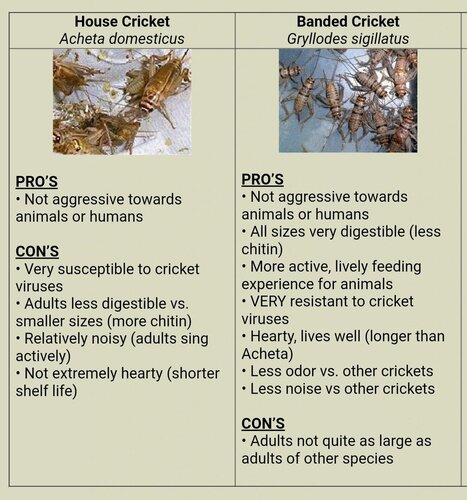Crossingtami
Avid Member
I noticed that I have been buying 2 types of crickets (acheta domesticus and banded). I bought different types just bc of the sizes ( medium banded for cham and large acheta for beardy). Is there a difference in terms of nutritional value? Both are gutloaded according to care sheet with fresh fruit, veggie, and flukers high calcium cricket diet etc.






